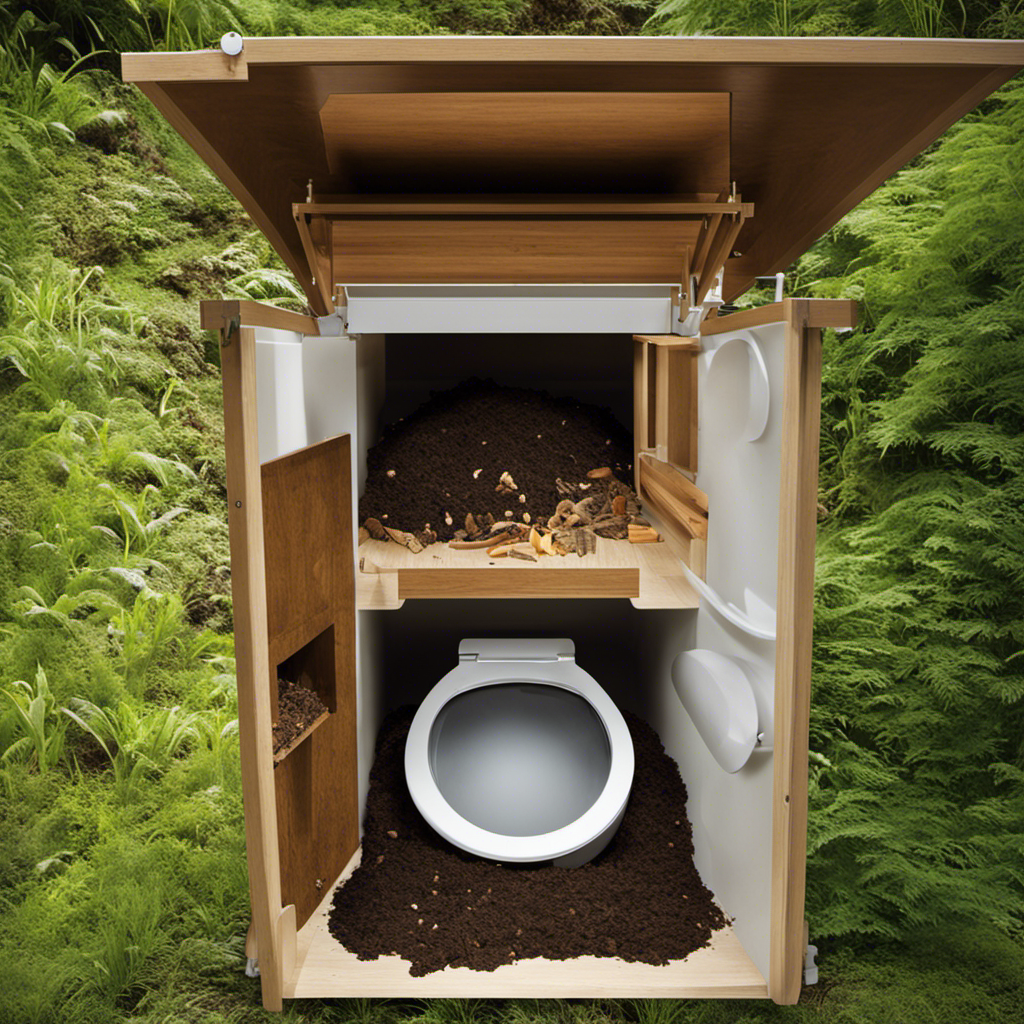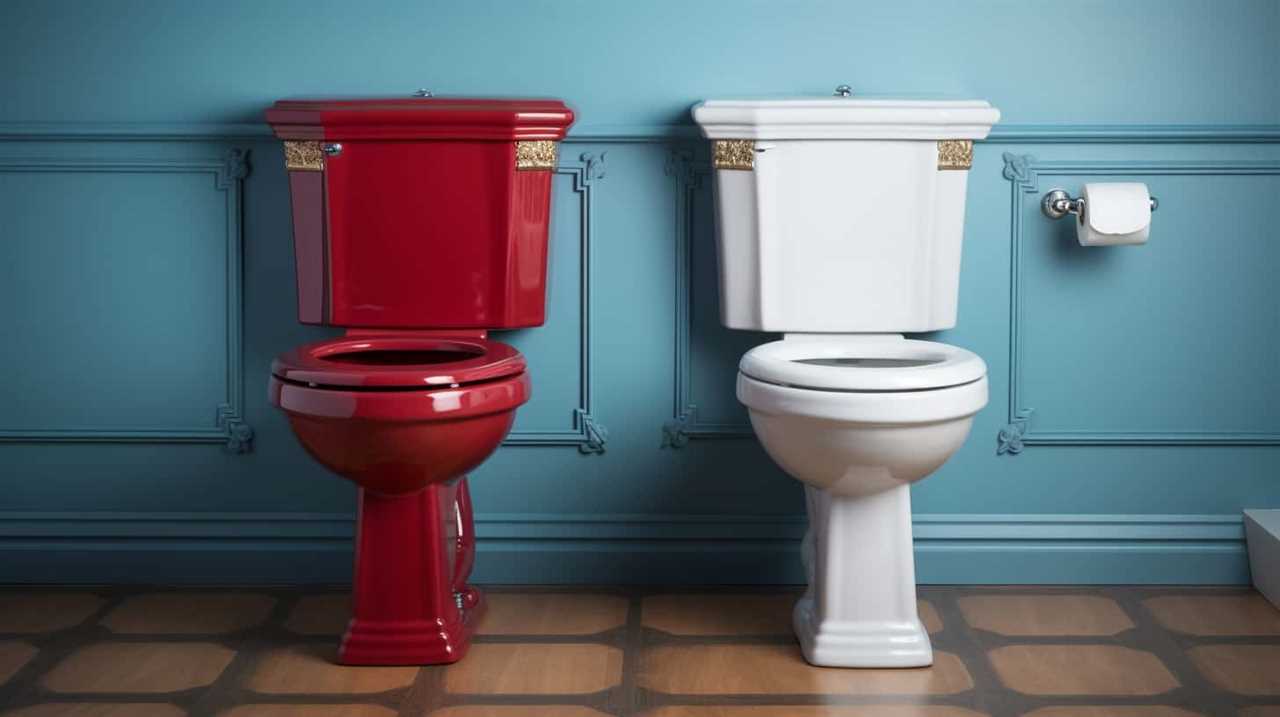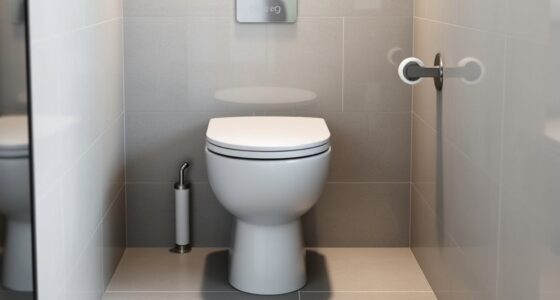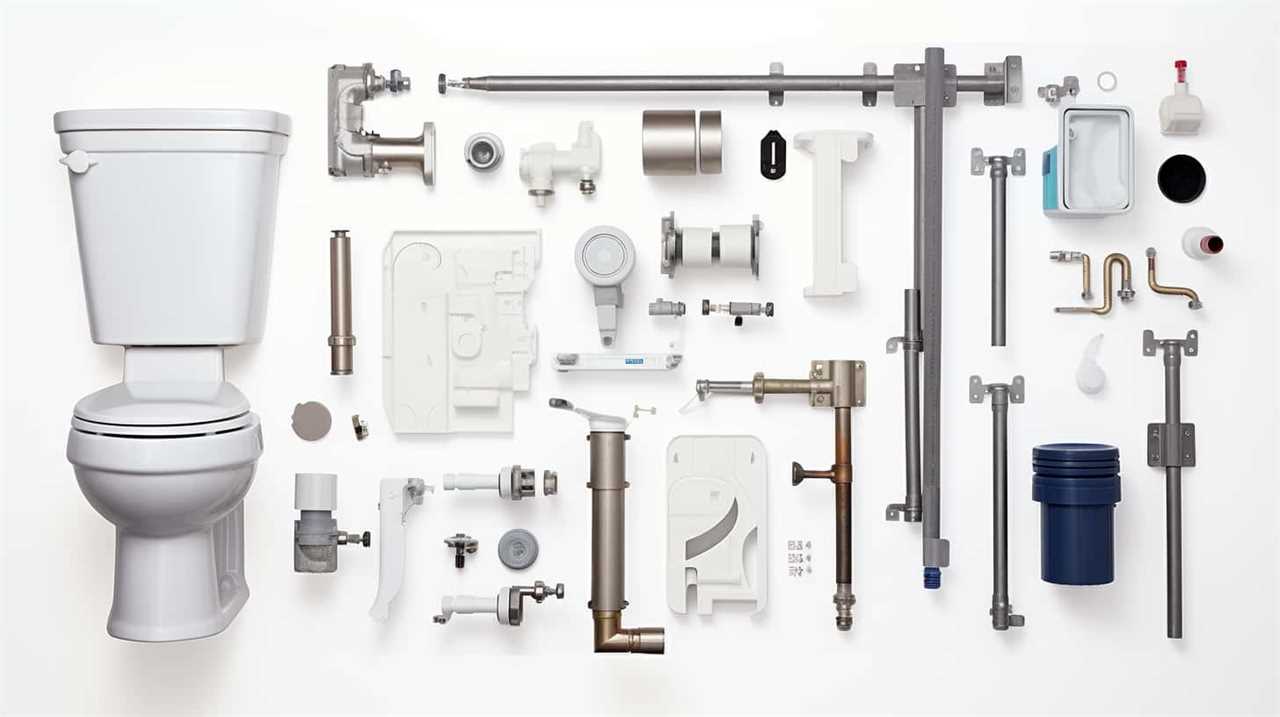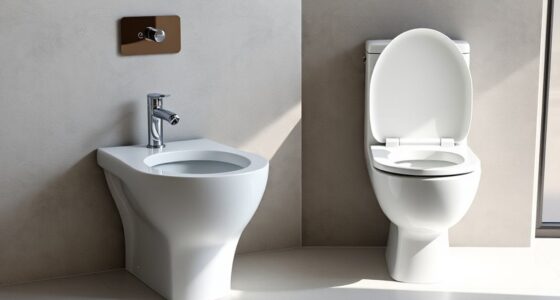Do you ever wonder how a composting toilet works? Well, you’re about to find out!
In this article, we’ll explore the fascinating world of composting toilets and how they function. You’ll gain a deeper understanding of the composting process, learn about the key components of these toilets, and discover how to use and maintain them effectively.
By the end, you’ll see the numerous advantages of using a composting toilet and the considerations to keep in mind before installing one.
Let’s dive in!
Key Takeaways
- Composting toilets are a sustainable alternative to traditional flush toilets.
- They rely on high temperatures to accelerate decomposition and transform waste into compost.
- Key components, such as ventilation systems and composting chambers, work together to efficiently break down waste.
- Composting toilets reduce strain on water treatment facilities and promote environmental sustainability.
The Basics of Composting Toilets
Composting toilets are a sustainable alternative to traditional flush toilets. They offer several benefits, making them an attractive option for those looking to reduce their environmental impact.
One of the main advantages of composting toilets is that they help conserve water. Unlike flush toilets, which use gallons of water per flush, composting toilets require little to no water. This not only saves water but also reduces the strain on water treatment facilities.
Additionally, composting toilets are a great alternative for areas with limited or no access to a sewage system. They provide a safe and efficient way to manage waste on-site without the need for costly infrastructure.
Understanding the composting process is essential to effectively use composting toilets.
Understanding the Composting Process
Understanding how the process works in a composting toilet involves the breakdown of waste materials into nutrient-rich compost. This breakdown is facilitated by a combination of factors, including composting temperature and decomposition rate. Here’s what you need to know:
-
Composting temperature:
-
Composting toilets rely on high temperatures to accelerate the decomposition process.
-
These toilets maintain an optimal temperature range of 110 to 160 degrees Fahrenheit.
-
Decomposition rate:
-
The rate at which waste materials decompose in a composting toilet depends on various factors, such as moisture content, oxygen availability, and the type of organic matter.
-
Under ideal conditions, decomposition can occur within a few months, resulting in the transformation of waste into compost.
Understanding the composting temperature and decomposition rate is crucial for the proper functioning of a composting toilet.
Now, let’s explore the key components that make up a composting toilet system.
Key Components of a Composting Toilet
The key components of a composting toilet system include a ventilation system, a composting chamber, and a urine separator. Composting toilet design focuses on creating a self-contained system that efficiently breaks down waste into compost.
The ventilation system is essential for odor control and proper decomposition. It allows air to circulate, facilitating the aerobic breakdown of organic matter.
The composting chamber is where the magic happens. It contains the waste and provides the ideal conditions for decomposition, such as the right moisture levels and temperature range.
The urine separator plays a crucial role in diverting liquid waste, preventing it from mixing with solid waste and affecting the composting process.
Composting toilets offer several benefits, including reducing water usage, minimizing environmental impact, and producing nutrient-rich compost for plants.
How to Use a Composting Toilet
To use a composting toilet, simply sit down like you would on a regular toilet and let nature take its course. The process may seem unfamiliar, but it offers numerous benefits. Here are some emotional responses you may experience:
- Relief: As you embrace the simplicity of composting toilets, you’ll feel relieved knowing that you’re contributing to a more sustainable future.
- Connection: By participating in the natural cycle of decomposition, you’ll establish a deeper connection with the environment.
Composting toilets offer a range of benefits, including reducing water consumption, preventing pollution, and producing nutrient-rich compost. To install one, follow these steps:
- Choose a suitable location, ensuring proper ventilation and access for maintenance.
- Install the composting unit according to the manufacturer’s instructions.
- Connect the toilet to a designated composting system, such as a separate compost bin or a composting chamber.
- Add a bulking agent, like sawdust or coconut coir, to aid in the composting process.
Maintenance and Troubleshooting Tips
In order to maintain your composting toilet properly, it is important to understand odor control techniques, preventing blockages, and leaks.
By implementing effective odor control techniques such as using composting material and proper ventilation, you can minimize unpleasant smells in your composting toilet.
Additionally, taking preventive measures like monitoring the input and ensuring the correct balance of carbon and nitrogen-rich materials can help prevent blockages and maintain the proper functioning of your composting toilet system.
Odor Control Techniques
Using activated charcoal filters can help control the odor in your composting toilet. These filters work by trapping and neutralizing the odorous gases produced during the decomposition process.
Here are some reasons why odor control is important in composting toilets:
-
It improves the overall experience. By reducing unpleasant smells, you can enjoy using your composting toilet without any discomfort or inconvenience.
-
It promotes a healthy environment. Foul odors can indicate the presence of harmful pathogens or bacteria. By controlling the odor, you can ensure a safe and hygienic environment for yourself and others.
-
It prevents attracting pests. Strong odors can attract insects and pests. By using activated charcoal filters, you can minimize the risk of infestation, ensuring a clean and bug-free composting toilet.
Preventing Blockages and Leaks
By properly maintaining your composting toilet, you can prevent blockages and leaks.
One important step in preventing blockages is to use the toilet correctly. Avoid flushing anything other than toilet paper and human waste down the toilet, as this can lead to clogs.
Regularly checking the composting chamber for any signs of overflow or excessive moisture can help you identify potential leaks early on.
Additionally, ensuring that the ventilation system is functioning properly can prevent odors and moisture buildup.
When installing your composting toilet, make sure to follow the manufacturer’s instructions carefully to ensure proper setup.
By taking these preventative measures, you can ensure that your composting toilet functions efficiently and avoids any potential issues.
Now, let’s explore the advantages of using a composting toilet.
Advantages of Using a Composting Toilet
You’ll love the advantages of a composting toilet, like the reduction of water usage and the production of nutrient-rich compost for your garden.
-
Water Conservation:
Composting toilets require little to no water for flushing, saving thousands of gallons of water each year. This is especially beneficial in areas experiencing water shortages or with limited access to clean water. By using a composting toilet, you can significantly reduce your water consumption and contribute to the conservation of this precious resource. -
Environmental Sustainability:
Composting toilets help reduce the strain on sewage treatment plants and the associated energy consumption and greenhouse gas emissions. The compost produced from human waste is rich in nutrients and can be used as a natural fertilizer for gardens, promoting sustainable agriculture practices.
Using a composting toilet not only benefits you personally by saving water and providing nutrient-rich compost, but it also contributes to the larger goals of water conservation and environmental sustainability.
Considerations Before Installing a Composting Toilet
Before installing a composting toilet, it’s important to consider factors such as available space, maintenance requirements, and local regulations.
Composting toilets have specific installation requirements that need to be met for optimal functioning. These include ensuring adequate ventilation and proper placement of the toilet in relation to the composting chamber.
It is also important to consider the cost implications of installing a composting toilet. While the initial investment may be higher compared to traditional flush toilets, the long-term savings on water and sewage bills can offset this cost.
Additionally, regular maintenance is necessary to ensure the composting process is efficient and odor-free. This involves monitoring the composting chamber, adding the right balance of organic material, and removing the composted material when necessary.
Always check local regulations to ensure compliance before installing a composting toilet.
Conclusion
In conclusion, using a composting toilet is a sustainable and eco-friendly alternative to traditional flush toilets. By turning waste into nutrient-rich compost, these toilets help to reduce water consumption and minimize environmental impact.
An interesting statistic to consider is that a single person using a composting toilet for a year can save up to 6,600 gallons of water, which is equivalent to approximately 100 bathtubs filled to the brim. This visual representation highlights the significant water-saving potential of composting toilets, making them a viable option for a greener future.
